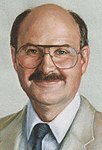This article needs additional citations for verification. (July 2016) |
| |||||||||||||||||||||||||||||||||||||||||||||||||
75 seats of the Legislative Assembly of British Columbia 38 seats were needed for a majority | |||||||||||||||||||||||||||||||||||||||||||||||||
|---|---|---|---|---|---|---|---|---|---|---|---|---|---|---|---|---|---|---|---|---|---|---|---|---|---|---|---|---|---|---|---|---|---|---|---|---|---|---|---|---|---|---|---|---|---|---|---|---|---|
| Turnout | 64.03%[1] | ||||||||||||||||||||||||||||||||||||||||||||||||
| |||||||||||||||||||||||||||||||||||||||||||||||||
 | |||||||||||||||||||||||||||||||||||||||||||||||||
| |||||||||||||||||||||||||||||||||||||||||||||||||
The 1991 British Columbia general election was the 35th provincial election in the Province of British Columbia, Canada. It was held to elect members of the Legislative Assembly of British Columbia. The election was called on September 19, 1991, and held on October 17, 1991. The incumbent Social Credit Party of British Columbia, which had been beset by scandals during Bill Vander Zalm's only term as premier, was defeated by the New Democratic Party of Mike Harcourt. Liberal Party leader Gordon Wilson surprised observers by leading his party to winning one-third of the votes cast, and forming the official opposition in the legislature after having held no seats at all since 1979. The new legislature met for the first time on March 17, 1992.
The election was held at the same time as a referendum on recall and initiative.[2] It was also the first British Columbia general election with only single-member districts.[3]
- ^ "B.C. Voter Participation: 1983 to 2013" (PDF). Elections BC. Archived from the original (PDF) on March 28, 2019. Retrieved May 11, 2017.
- ^ "Archived copy" (PDF). Archived from the original (PDF) on October 9, 2007. Retrieved April 5, 2008.
{{cite web}}: CS1 maint: archived copy as title (link) - ^ "Elections BC - SOV91 Forword". Archived from the original on October 4, 2007. Retrieved February 2, 2008.
